NRAO eNews
Volume 11, Issue 9
13 September 2018
Upcoming Events

Jansky Lecture: Roger Blandford
Oct 30, 2018 | Charlottesville, VA

Jansky Lecture: Roger Blandford
Nov 1, 2018 | Green Bank, WV

Jansky Lecture: Roger Blandford
Nov 9, 2018 | Socorro, NM

34th Annual New Mexico Symposium
Nov 9, 2018 | Socorro, NM

TORUS 2018: The Many Faces of AGN Obscuration
Dec 10 - 14, 2018 | Puerto Varas, Chile

NRAO Town Hall
Jan 8, 2019 | Seattle, WA

National Radio Science Meeting
Jan 9 - 12, 2019 | Boulder, CO

Theoretical Advances Guided by Radio-Millimeter-Submillimeter Arrays
Jan 9, 2019 | Seattle, WA

Exploring our Cosmic Origins: New Results from ALMA
Jan 9, 2019 | Seattle, WA

VLA Sky Survey Special Session
Jan 10, 2019 | Seattle, WA

New Horizons in Planetary Systems
May 13 - 17, 2019 | Victoria, British Columbia, Canada
Status of VLA Electrical Infrastructure Upgrade & Impact on Observing
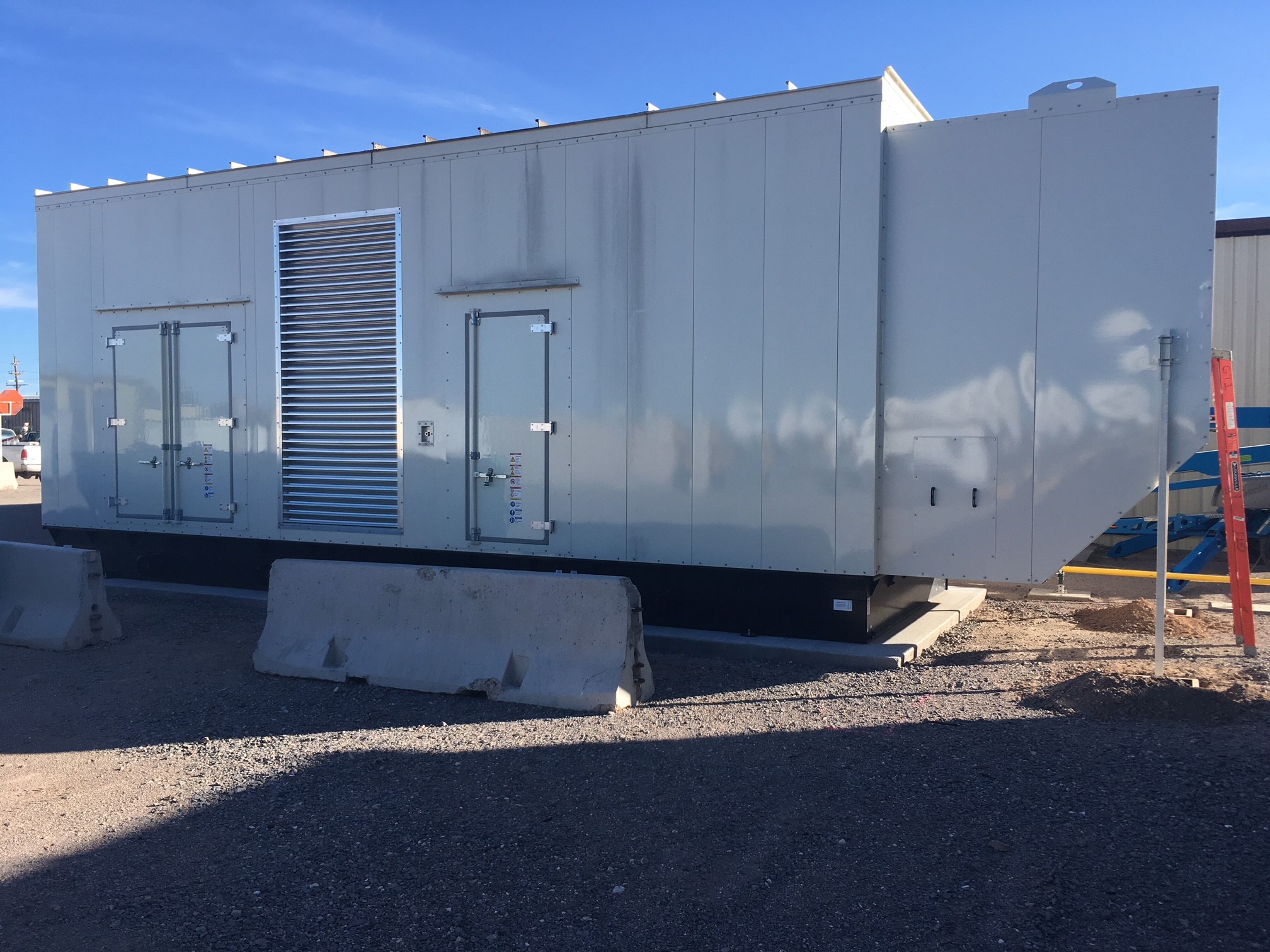
Figure 1. Enclosure for the VLA’s new 2.4MW electrical generator.
[click to enlarge]
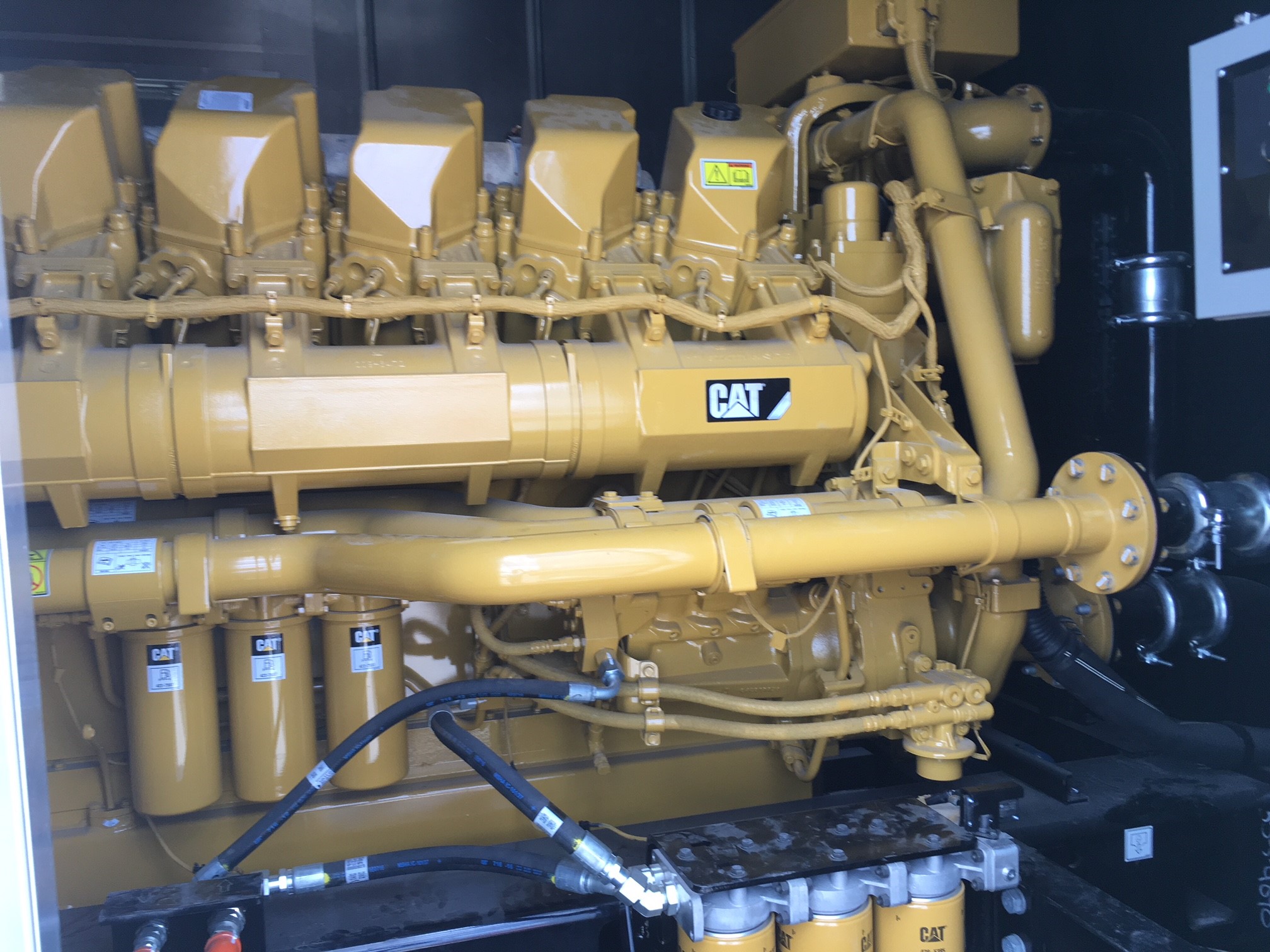
Figure 2. Drive engine for the new VLA generator.
[click to enlarge]
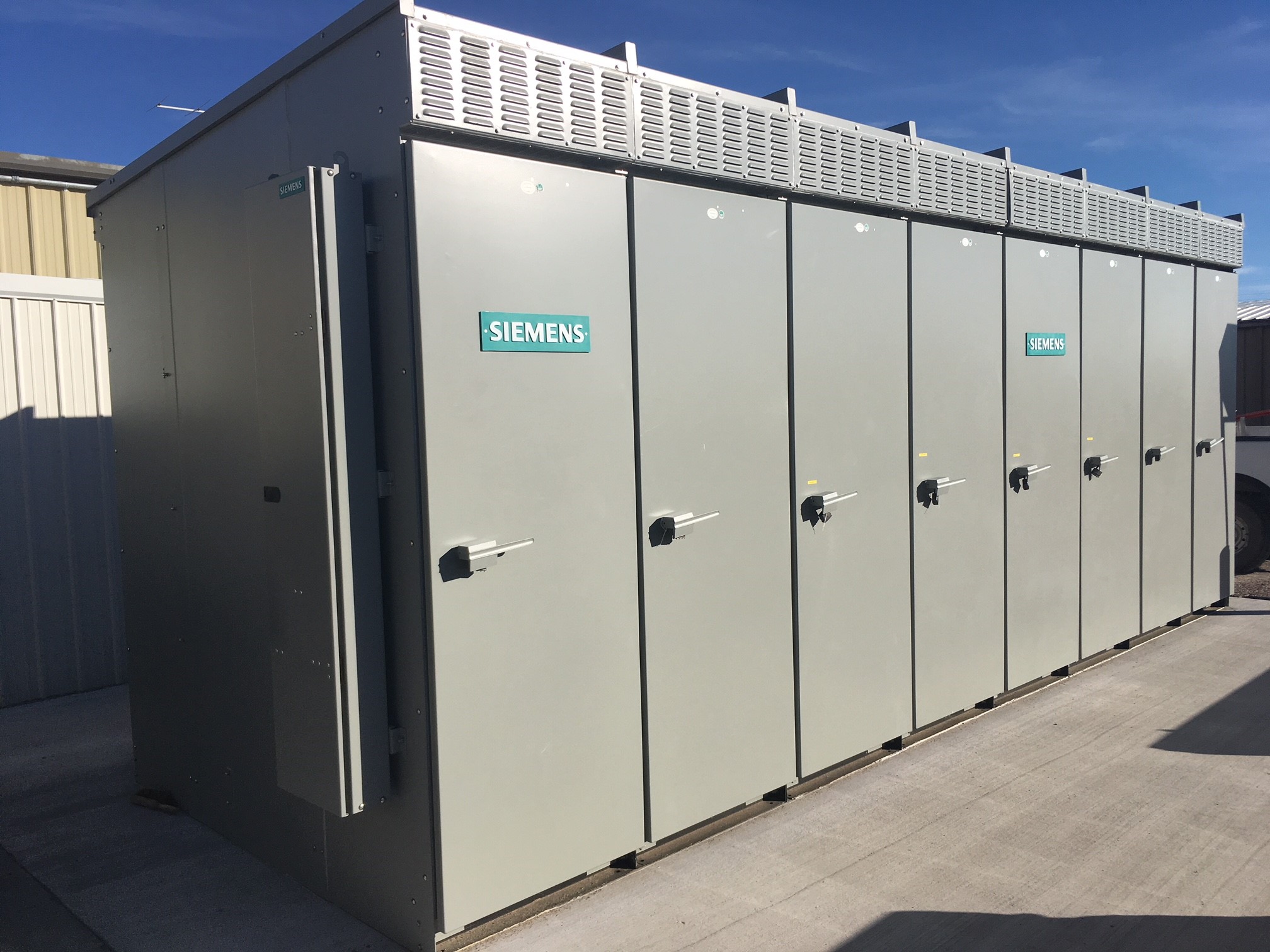
Figure 3. New VLA switchgear.
[click to enlarge]
As part of a major NRAO initiative to improve the 40+ year old infrastructure at the VLA site, a $2.4M project to replace the VLA’s backup electrical generator and switchgear was undertaken this summer. The switchgear is the equipment that distributes electrical power from either the normal commercial utility or the backup generator to the three array arms, buildings, and other facilities at the site. The work was originally scheduled to be performed during the antenna moves between the A- and D-configurations on 11-29 June. Unfortunately, the work schedule was protracted due to late deliveries of the new equipment, leaving the VLA without electrical power until 10 August. The new electrical equipment, as installed, is shown in Figures 1-3.
After restoring the VLA antennas and correlator to operation after a hiatus of over eight weeks, VLA observing in D-configuration commenced on 17 August. A severe thunderstorm caused a commercial power outage on the evening of 18 August, and although the new generator had successfully completed its acceptance tests, it did not automatically assume the electrical power load of the array as designed. Commercial power was restored to the VLA shortly thereafter, but observing did not resume, because memory chips on the circuit boards in the correlator are prone to failure upon power cycling, and we determined that we did not have a reliable source of backup power at the time; we could not be sure that the generator would assume the load if commercial power were to go out. Investigations quickly determined that the problem was due to the array’s power factor (essentially a measure of power transmission efficiency) being too low when the generator first starts. This issue is being resolved by staging the delivery of generator power to the VLA by one array arm at a time, manually, if needed, on the short term. In addition, we have cut power to stations beyond the end of the D-configuration antenna stations. The long-term solution involves reprogramming of the switchgear, which must be done by the contractors involved. Planning for this work has begun, and negotiations with the contractors have been initiated. VLA observing resumed on 31 August and has continued since.
As a result of the prolonged power outage, the end date for D-configuration will be extended so that we can still complete much of the approved science program for the configuration. Other changes in configuration dates have also been made so that we can get back to close to the nominal schedule by the end of the next A-configuration. The dates of subsequent configurations are currently planned to be as follows:
| Configuration | Time Frame |
|---|---|
| D-configuration | through 13 November 2018 |
| C-configuration | 19 November 2018 – 4 February 2019 |
| B-configuration | 20 February – 1 July 2019 |
| A-configuration | 26 July – 28 October 2019 |
Contributed Posters for AAS Special Sessions

The NRAO is pleased to solicit contributed posters to three Special Sessions (described below) that have been accepted for the January 2019 American Astronomical Society (AAS) meeting in Seattle. When submitting a contributed poster abstract to the AAS, you may request that your presentation be included in one of these Special Sessions.
The deadline for abstract submission is Wednesday, 3 October 2018, 21:00 Eastern Time.
Exploring our Cosmic Origins: New Results from the Atacama Large Millimeter/submillimeter Array
Wednesday, 9 January 2019, 10:00-11:30 Pacific Time
This Special Session will describe the latest news, capabilities, and expectations for the Atacama Large Millimeter/submillimeter Array (ALMA) performance and science in the next few cycles and beyond. This Session will feature science talks by invited speakers who will present recent, exciting ALMA discoveries across many fields of astrophysics, including solar system objects, planet-forming disks, astrochemistry, galaxies, cosmology and the high redshift Universe. The support available to the community from the North American ALMA Science Center (NAASC) at the NRAO for Principal Investigator and archive-driven ALMA science will be described.
A poster session will be associated with this Special Session that will feature contributed science posters from across the ALMA community. We encourage you to showcase your ALMA results in this session when submitting a contributed poster abstract to the AAS.
Theoretical Advances Guided by Radio-Millimeter-Submillimeter Arrays
Wednesday, 9 January 2019, 14:00-15:30 Pacific Time
This Special Session will highlight recent theoretical breakthroughs enabled by the VLA and ALMA, summarize planned VLA and ALMA improvements, discuss theoretical leaps that are likely to follow, and underscore the relevance of the VLA and ALMA to the science themes motivating future facilities, such as the next generation Very Large Array (ngVLA).
We encourage you to consider contributing to the associated AAS meeting poster session. We especially seek posters that will foster a robust dialog between theorists and observers. We are particularly keen to feature posters from ngVLA enthusiasts, showcasing their vision of research unfolding in an era guided by ngVLA data.
VLA Sky Survey Special Session
Thursday, 10 January 2019, 10:00-11:30 Pacific Time
The Very Large Array Sky Survey (VLASS) is the first synoptic all-sky radio survey. Observations began in Fall 2017 and will continue until 2024. VLASS will be observed in three epochs, across a wide bandwidth (2-4 GHz), with calibration in the I,Q and U Stokes parameters, and with high angular resolution (2.5 arcsec) over the whole sky north of declination -40 deg. Observations of the first epoch are complete over half the sky, and science-ready data products are being produced by NRAO. In this Special Session, invited speakers from the community will discuss the possibilities for novel scientific studies using the VLASS data such as time domain and wide-band polarimetric studies. They will also discuss a commensal low frequency survey and the application of machine learning techniques to VLASS data. Speakers will also describe the available data products and the tools available to obtain and use them.
We will accept contributed talks and posters from a range of backgrounds to ensure a diverse and inclusive representation of our users.
2019 Jansky Fellowship Program
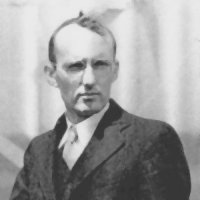
The Jansky Fellowship Program supports outstanding postdoctoral scientists whose research is broadly related to the mission and scientific goals of the National Radio Astronomy Observatory (NRAO), which operates two world-class research facilities: the Atacama Large Millimeter/submillimeter Array and the Very Large Array.
As a Jansky Fellow, you will have a unique opportunity to contribute to and learn from the development and delivery of the largest and most capable radio telescopes in the world. Research that employs NRAO telescopes in multi-wavelength collaborations is encouraged. Candidates with interests in radio astronomy techniques, instrumentation, computation, and theory are encouraged to apply. Applicants should describe how their research or technical interests couple with NRAO telescopes or science.
Appointments may be made at either of the NRAO sites: Socorro, NM, or Charlottesville, VA. In compelling cases, a ‘split appointment’ Jansky Fellowship split between a university and an NRAO site, or a ‘non-resident’ Jansky Fellowship hosted at a university within the United States may be offered. Non-resident Jansky Fellows are encouraged to develop a research program that fosters close ties with the NRAO, and should present a compelling case why residence at their proposed host university will accomplish this. They are also strongly encouraged to make frequent and/or long term visits to NRAO sites during their Fellowship.
All Jansky Fellows are expected to spend at least 75% of their time on self-directed research. Jansky Fellows are also encouraged to spend 10-25% of their Fellowship on activities related to the development and delivery of radio astronomy techniques, capabilities, or outreach activities, using those opportunities to develop their own broad skill set.
The NRAO Jansky Fellowship Program provides numerous opportunities for early career scientists to acquire a deep knowledge and understanding of the state-of-the-art in radio astronomy and to establish themselves as innovative, independent research scientists. Jansky Fellows are encouraged to develop research collaborations with NRAO scientific staff, scientists at U.S. universities, and their colleagues in the international astronomical community. An annual, multi-day NRAO Postdoctoral Symposium fosters collaboration between Jansky Fellows and the Observatory’s scientific staff.
The starting salary for the 2019 Jansky Fellowship program will be $67,500 per year for an initial two-year appointment with possible renewal for a third year. A research budget of up to $17,000 per year is provided for travel and computing support. Fellows are also eligible for page charge support, vacation accrual, health insurance, and a relocation allowance. Up to $3,000 per year is provided to non-NRAO institutions hosting a Jansky Fellow to defray local institutional expenses.
The deadline for 2019 Jansky Fellowship Program application materials, including letters of reference, is Thursday, November 1, 2018 at 11:59 pm EDT. Award offers will be made starting in early January 2019. Fellowships normally begin in September 2019.
For more information about the Jansky Fellowship Program and instructions on how to apply, please visit the Jansky Fellowship website. Questions or assistance with the application procedure, as well as requests for additional information on the Jansky Fellowship Program may be sent to Jansky2019@nrao.edu.
NRAO is an equal opportunity employer.
2018 Jansky Lecturer: Prof. Roger D. Blandford

Associated Universities, Inc. (AUI), and the National Radio Astronomy Observatory (NRAO) have awarded the 2018 Karl G. Jansky Lectureship to Professor Roger D. Blandford of Stanford University. The Jansky Lectureship is an honor established by the trustees of AUI to recognize outstanding contributions to the advancement of radio astronomy.
Professor Blandford has made many theoretical contributions to radio astronomy. In particular, he, along with younger colleagues, developed the basic theory behind the formation and propagation of cosmic jets of plasma propelled at nearly the speed of light. He has received many prizes and awards and is arguably the outstanding theoretical astrophysicist in the U.S.
A native of England, Blandford earned his B.A., M.A., and Ph.D degrees at Cambridge University. He held postdoctoral positions at Cambridge, Princeton, and Berkeley before joining the faculty at Caltech, where he taught astronomy and physics for more than 25 years. In 2003, he moved to Stanford to become the first Director of the Kavli Institute for Particle Astrophyics and Cosmology. His research interests cover many aspects of radio astronomy involving quasars, pulsars and supernova remnants, as well as cosmology, using gravitational lensing and the cosmic microwave background.
He has received many honors, including election as a Fellow of the Royal Society and of the American Academy of Arts and Sciences, and is a member of the National Academy of Sciences. He has received the American Astronomical Society’s Dannie Heineman Prize, the Crafoord Prize, and the Gold Medal of the Royal Astronomical Society.
As Jansky Lecturer, Blandford will speak on The Radio Harvest at NRAO facilities in Charlottesville, Virginia; Socorro, New Mexico; and at the Green Bank Observatory in West Virginia. The presentations will illustrate the glorious/remarkable history and international development of radio astronomy, paying special attention to pulsars, massive black holes, cosmology and using one of the most fascinating recent discoveries, fast radio bursts. These lectures are open to the public.
| Charlottesville, VA | Green Bank, WV | Socorro, NM |
|---|---|---|
| Nau Hall, Room 101, University of Virginia Tue, Oct. 30, 2018, 7:00 pm |
Green Bank Science Center Auditorium Thu, Nov 1, 2018, 7:00 pm |
Workman Center, Room 101, New Mexico Tech Fri, Nov 9, 2018, 7:30 pm |
ALMA Program News
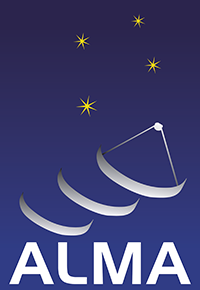
The ALMA team restored the array to operational status efficiently after three successive July snowstorms. The array has transitioned to the C43-4 configuration (0.92 arcsec beam at 100 GHz, 15-784 meter baselines). Array elements are then planned to move outward in an expanding array cycle, continuing to C43-5 configuration by the 30 September 2018 end date for Cycle 5 science observing.
A detailed report on the assessment of the 1836 ALMA Cycle 6 proposals is available at the ALMA Science Portal. Principal Investigators should have already reviewed and submitted their Phase 2 instructions (‘scheduling blocks’) for Cycle 6 observing, which begins 1 October 2018.
As Cycle 5 drew to a close, a gap was identified in the Atacama Compact Array observing schedule between LST of 22 hours and 1.5 hours. Scientists at the Joint ALMA Observatory (JAO) and the ALMA Regional Centers proposed a number of filler programs. These proposed programs were reviewed by the ALMA Integrated Science Team and the ALMA Director approved four. A summary of these programs is on-line. The data from the proposals will be quality assessed by the JAO and released through the ALMA Archive with no proprietary period.
A Special Session at the 233rd American Astronomical Society Meeting, 6-10 January 2019 in Seattle, will present ALMA scientific results, news and expectations for ALMA performance and science in the next few cycles. We encourage you to submit a poster featuring ALMA results at the dedicated poster session associated with this Special Session.
ALMA Ambassadors Postdoctoral Program

The North American ALMA Science Center (NAASC) is accepting applications for the ALMA Ambassadors Postdoctoral Program. The Program provides training and a $10,000 USD research grant (other forms of payment are available, see below) to postdoctoral researchers interested in expanding their ALMA / interferometry expertise and sharing that knowledge with their home institutions through the organization of ALMA Cycle 7 proposal preparation workshops.
The NAASC will sponsor selected postdocs at the National Radio Astronomy Observatory headquarters in Charlottesville, Virginia for three days in February 2019 to receive in-depth training. Training will include topics related to ALMA proposal writing, including: interferometry basics, ALMA science capabilities, recent ALMA highlights, use of the Observing Tool, and guidance with speaking on these topics. The training session will also include a poster viewing session where the participants can highlight their science followed by an informal lunch with NRAO staff. After the training, the postdocs will host a local proposal preparation workshop at their home institution in advance of the Cycle 7 ALMA proposal deadline in April 2019.
All talk materials, supplies, and infrastructure for the workshops are provided by the NAASC. A $10,000 monetary grant is offered in support of the selected postdocs' independent research programs. If the awardee is not able to receive the monetary grant, the NAASC can offer up to $10,000 in science travel reimbursement (must be used within 12 months of training) or up to $10,000 for the host institution to support students or summer researchers. Postdocs with some radio or submillimeter interferometry experience are preferred. Postdocs must be based at a U.S. institution.
If you do not meet these requirements but are interested in learning more about the training we are offering, please contact Loreto Barcos-Munoz to discuss possible opportunities. Although not required, we will consider multiple postdoctoral applicants from the same institution to share the award.
Deadline to apply is 15 November 2018. To apply and for more information, please visit the ALMA Ambassadors website, and send a CV and completed application to Katelyn Sevin.
ngVLA Program News
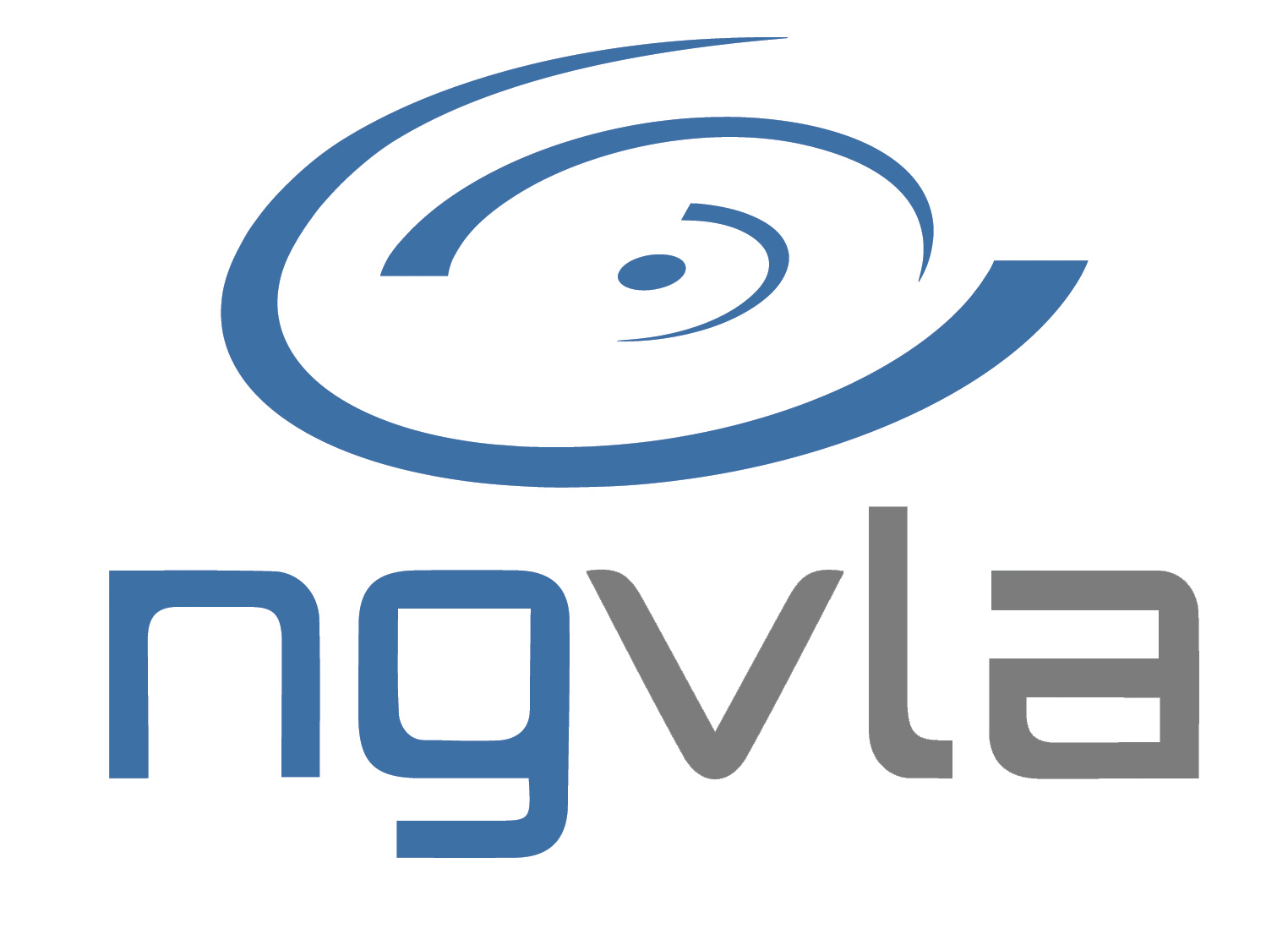
Science with a Next-Generation Very Large Array
With essentially all contributions in-hand, we are working to complete the ngVLA Science Book and begin the publication process via the Astronomical Society of the Pacific Monograph series to ensure that we have hard copies available at the January 2019 American Astronomical Society meeting in Seattle. This will also ensure that individual chapters will be listed in the SAO/NASA Astrophysics Data System for maximum visibility to the Astro 2020 panel members. We thank all who have contributed to this exciting collection of transformative science, and all first authors will receive a complimentary copy.
With nearly 90 chapters (800+ pages) from 280+ authors, this volume highlights key areas of astrophysics that are ripe for major breakthroughs and underscores the broad U.S. and international support for pursuing a next-generation Very Large Array (ngVLA). While this published volume will serve as a critical snapshot for the ngVLA project status and a vision for the ngVLA transformational science, we envisage this science book as a living document that will be periodically updated until the initiation of construction.
American Association for Advancement of Science (AAAS) Annual Meeting
The NRAO is organizing a science symposium at the 2019 AAAS Annual Meeting in Washington, D.C. in February 2019 entitled Multi-Messenger Astrophysics: Insights from Combining Gravity and Radio Waves.
This symposium will discuss the essential role radio astronomy plays in improving our understanding of the physics of gravitational wave events now being detected in the Universe. This field of multi-messenger astrophysics is rapidly advancing and maturing, with the first generation of gravitational wave telescopes now online, and the discovery of numbers of gravitational wave events. The most recent detection with the Laser Interferometer Gravitational-wave Observatory (LIGO) arose from the collision of two neutron stars in a distant galaxy and is still being observed at radio wavelengths with the NRAO Karl G. Jansky Very Large Array (VLA), yielding fundamental insights into the exotic merger physics. Joint analyses of gravitational and electromagnetic radiation from violent astrophysical events such as neutron star and black hole mergers significantly deepen and challenge current knowledge of the Universe. This knowledge will only continue to broaden and expand when next-generation facilities that are more sensitive to gravitational and electromagnetic radiation are commissioned, such as the Advanced LIGO facility and a next-generation VLA. This session reports on recent developments in radio astronomy and how observations of astronomical phenomena via both gravitational and electromagnetic “messengers” are enabling major new physical insights into the cosmos.
The symposium includes three review talks:
- Kunal Mooley (NRAO/Caltech): Mapping Gravitational Bursts as Radio Wavelength Afterglows
- Alessandra Corsi (Texas Tech): Multi-messenger Time-domain Astronomy in the ngVLA era
- David Shoemaker (MIT Kavli Institute): Gravitational-wave Detectors: Roadmap and Capability in the 2030's
History of the SKA

We would like to draw your attention to a meeting on the History of the SKA, which will be held 3 – 5 April 2019 at the Square Kilometre Array (SKA) Organisation Headquarters at Jodrell Bank Observatory, just prior to the SKA Science Meeting, which will take place 8-12 April at the same location.
The 1980s-2012 period covers the time from early ideas about a large radio telescope up to the SKA site decision made by the newly established SKA Organisation. This period of SKA history is the subject of a book in preparation by the undersigned and should be of special interest to mega-science project proponents and enablers.
We plan to have a relatively small number of invited presentations on various themes –science, engineering, international collaboration, project politics and funding, site selection, and industry engagement – and to devote a third of the meeting to discussion on topics that range over the various themes, and also reflect on the SKA as a mega-science project. We hope that the discussion periods will afford many of the participants an opportunity to contribute to the meeting in an informal way that encourages cross-fertilization of ideas and insights about the history of the SKA.
More information, including a registration form, is available on-line.
NRAO Annual Reports
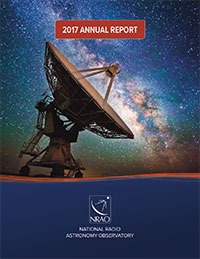
The NRAO Annual Report for calendar year 2016 describes the year’s science highlights and summarizes the numerous science, development, operations, and construction activities that were conducted across the Observatory from 1 January – 31 December 2016. The 2016 NRAO Annual Report can be accessed as a pdf download or for interactive on-line viewing.
Similarly, the NRAO Annual Report for calendar year 2017 describes science highlights and the numerous science, development, operations, and construction activities that were conducted across the Observatory from 1 January – 31 December 2017. The 2017 NRAO Annual Report can also be accessed as a pdf download or for interactive on-line viewing.
Recent Media Releases
|
Fierce Winds Quench Wildfire-like Starbirth in Far-flung Galaxy |
|
|
Radio Observations Confirm Superfast Jet of Material From Neutron Star Merger |
|
|
First Science with ALMA’s Highest-Frequency Capabilities |
Career Opportunities
Research Associate: The National Radio Astronomy Observatory (NRAO) invites applications for a postdoctoral researcher in galaxy evolution at the NRAO Headquarters in Charlottesville, Virginia. The successful applicant will work under the supervision of Dr. Eric Murphy on a multi-wavelength analysis of data from the Jansky Very Large Array (VLA) Frontier Field Public Legacy Survey.
The primary focus of this postdoctoral position will be incorporating new, extremely deep, sub-arcsecond, multi-frequency (full polarization) VLA data into a comprehensive, multi-wavelength analysis of the Hubble Space Telescope (HST) / Spitzer Frontier Field program. Together with the HST and Spitzer data, these new radio images will inform a variety of extragalactic topics, including the importance of dusty star-forming galaxies at high redshift; the evolution of supermassive black holes; the nature of starburst galaxies out to z ~ 3; and the rapid evolution of galaxies in the lensing clusters themselves.
From the Archives
Ellen Bouton

[click to enlarge]
About this month's photo: NRAO was still looking for a site for the Millimeter Array when Paul Vanden Bout and the late Bob Brown made their first exploratory trip to Chile, 18-23 May 1994. In 2004, Bob wrote about the trip, saying, "I remember vividly our first trip to Chile. It was in May 1994 where we went to see the two 'best' sites that had been identified by the SAO group, both of those sites being near Ollague. The next day we ended up stuck in the sand of the Paso de Jama, but clearly impressed that this area, not the area near Ollague was better if for no reason [than] because of its accessibility. ... Specifically, re Ollague, we visited sites #19 and 20 on the SAO list of candidate sites and there are photos of both (which look like everything else in the Atacama, barren and flat). … The final result, identification of the Chajnantor site, did not occur on this trip. Instead, that was done on the day following the visit of Bill Harris and Hugh Van Horn to Chile in October 1994."
In this photo taken by Bob Brown, Paul Vanden Bout (white hat), Riccardo Giovanelli (light blue sweater), and Hernan Quintana (dark sweater) gas up the rental car in Antofagasta at the start of the trip.
From the Archives is an ongoing series illustrating NRAO and U.S. radio astronomy history via images selected from our collections of individuals' and institutional papers. If readers have images they believe would be of interest to the Archives, please contact Ellen Bouton.


